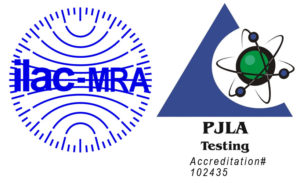AAMI 24th Annual Meeting Presentation by James C. Conti, Ph.D.
Heart Valve Testing
by | AAMI 1990 | Publications, Heart Valve Testing
AAMI 24th Annual Meeting Presentation by James C. Conti, Ph.D.
Presentation:
Thank you Dr. Gabbay, Dr. Mueller, and thank you for inviting me to this gathering. I am excited and hope that this opens up a new wave of interest in in-vitro durability testing.
The usefulness of experimental data is of course dependent upon the reliability of that information, and any scientist or engineer who would be queried concerning this fact would be quick to agree, I am sure. Nonetheless, I am continually confronted with attitudes from my colleagues concerning the value of in-vitro heart valve durability testing, this from individuals in laboratories that apparently feel that attention to experimental detail is simply not important in this particular case. At our facilities, we are continually asked to write, review, or carry out protocols to evaluate experimental heart valves. Although I don’t think it is appropriate to use this kind of a format for advertising instruments, and I don’t intent to do that, I would like to quickly review the steps that we use to effectively accomplish heart valve durability testing. As you will note in the abstract there are certain assumptions that have been made. The assumptions are basically that you have a heart valve durability tester that does the job as you want it to do. It is designed such that, as we have noted in the abstract, the pressure measurements are free of inertial interference, the transducers that you use are not frequency dependent in the range in which you are using them, the system has near zero capacitance, and the pressure measurements do not change with time. I think that the bottom line is that the pressure measurements that you make must truly reflect the load that the valve is experiencing. All those assumptions made, there is a series of considerations that we go through when we set up to test a heart valve. Three of these criteria are the same regardless of whether it is a mechanical or a leaflet heart valve. The first is that the valve must open fully each cycle, and it must open smoothly. If it is a leaflet valve, the leaflet cannot flutter as they are opening. If it is a mechanical valve, the occluder cannot flutter as it is opening. After full opening, a leaflet valve, be it polymeric or bioprosthetic, must not bend over and hit the stents. It should maintain a fairly parallel position with respect to flow. On closing, again, the leaflets and the occluders should not vibrate during that closing motion. At the end of each cycle, the valve must experience full closure, and, in particular with mechanical valves, right at the point of closure one has to be careful to not experience any cavitation. It is very difficult to always assess whether or not cavitation is experienced, but if it is bad enough one can notice what appears to be a flash or a mirror effect flashing across the edge of the valve. Most of us understand these different criteria for setting up a heart valve, although when the time comes, most individuals that I work with are usually under time constraints such that they have a certain number of months within which to generate data. That has been sent down to them from the top, and they have to set up their machines at a certain speed. That speed is not experimentally determined, but is determined from a marketing perspective. What I would like to do is to focus on one aspect of the setup to try and point out how important it is that we focus our attentions on proper experimental protocols, if we desire to generate valid durability data. Of course, if your purpose is to just generate data so that you can get a valve on the market, well then if things happen down the road that you could have predicted but didn’t, because of your time constraints, that is the kind of problem you are going to run into.
On the first slide you see a bioprosthetic reading. We received a new valve a couple of weeks ago that we were asked to generate protocols for, and I thought that this was a particularly good example of what can go wrong if you are not careful about what you do when you setup a valve. In this particular instance, we have tested a 35 mm valve. These are gigantic valves, and of course the larger the valves are the more difficult they are to test, as you all know. These are also a single occluder mechanical valves, again very difficult by nature to tune.
What we have here is a valve that is being tested at 400 cycles per minute, pretty slow, most people would say. Although it is difficult to see, we are running somewhere between 118 and 125 mm Hg closing pressure. I took a series of shots to show you that on every cycle the valve was closing. We observed this microscopically, but you have to really assess this with the pressure trace. This I expanded just to show you that this is not an acoustic spike but a true closing pressure. What we then did was try to speed up the machine to 800 beats per minute, assuming that we were not allowed to test this valve at 400. In actual fact, we were not. At 800, we spent a couple of hours just trying to tune the machine. The best that we could do by the criteria I am talking about (no occluder flutter, closing on every cycle, fairly reproducible closing pressure), is going to be shown in these next four slides. You will find that the closing pressures here are running anywhere from about 125 mm Hg of pressure to about 300 mm Hg of pressure. We are still closing on every cycle, and most of our closing spikes are running 125 to 175 mm Hg. We do have these transient spikes that are coming up at about 250 mm Hg and sometimes 300 mm Hg. We had a big spike that is running at about 500 mm Hq. We found that about one out of every 100 cycles we would reach about 500 mm Hg. The problem here, of course, is that the occluders at this speed are simply not experiencing reproducible motion. It is taking slightly more volume in one cycle than the next to close these valves, which has to do with the reproducibility of the motion of the occluder, and the ability of the occluder to move with speed. We then assumed that we were under the constraints of having to test this valve at 1200 cycles per minute. Setting the machine at 1200 cycles per minute, we then adjusted all of the parameters of the device to get the best traces that we could. These are the best traces that we could get. On this slide we have 125 mm Hg to about 300 mm Hg. On this particular slide we get closing on every cycle. We took a fast shot to show the nature of that spike. On this particular one we are running anywhere from about 125 to 600 mm Hg closing pressure. We do get an average spike now and then. The real trouble here is that on two of cycles the valve has not closed enough to give us a closing pressure. Now the point that I am trying to show here is that you have to use your valve in your particular machine and go through procedures of generating a valid protocol. You can’t predict ahead of time what speed you can test the valve at. I would say of all of the testing laboratories that I have visited, the biggest problem that I run into is the desire on the part of the individuals running the machine to test the valves faster than they are really able to do. It is not just our instrument. It is all of the instruments that I have observed. Again we run into the dilemma of wanting to test valves appropriately, but we have time constraints put upon us from the marketing end of the whole thing. What you get into usually is a tendency to overlook certain valve failures that you run into in an in-vitro manner. Because you know that you have over tested the valve, you know that you have some transient high pressure spikes, so that if 10% of your spikes are higher than you want, and 10% of your valves experience mechanical failure, you have a tendency to overlook that and sure enough now we are working with individuals who are losing millions of dollars a day because they did that. All I can do is encourage you folks to realize that if you want to generate valid accelerated durability data, you really have to probably slow down your testing. Thank you.
Discussion:
Q: ( Walker ) You mentioned cavitation earlier on, and my question relates to that as it is a topic we have been interested in for mechanical valves. I believe you said that you try to eliminate it. In our experience we have seen explanted valves where there has been evidence of cavitation. I just wonder what your rationale is for eliminating cavitation?
A: (Conti) We are also aware of recent information indicating that cavitation can perhaps occur in-vivo, or at least there is the ability to expose the valve in-vivo to conditions in which material is removed from that valve in a manner which makes it look as though it is experiencing cavitation. It is rather shocking, I would think that you would all agree to that. What I was referring to at the time was a cavitation problem that was a little more wide spread than the localized cavitation that we have all seen in our explanted valves. It seems to us that if we are running about 1200 cycles per minute and then slowing down to a somewhat slower speed of about 1000, where we cannot observe this wide spread banding of cavitation, that is probably better for our testing. We have never observed, even on valves that have experienced these problem in-vivo, cavitation in the regions in which they do in-vivo.
Q: (Gabbay) Could you please explain the term cavitation.
A: (Conti) Cavitation has to do with pressure differential that occurs in a flowing liquid which results in the actual evaporation of the liquid adjacent to a surface. It is a rapid expansion, constriction of an air bubble. (Here Conti defers to Professor Swanson for a better explanation.)
A: (Swanson): A vapor is capable of performing – the damage comes when it collapses – There is such a pounding when it collapses, it will just eat out a molecule at a time. When a small bubble collapse, as you see with heart valves, you see this “flash” that occurs immediately. When you catch it with a strobe, the flash is visible.
Q: (Gabbay) Why this air bubble does no real damage to bioprostheses? Why only to mechanical valves?
A: (Swanson) Because the accelerations of the fluid locally are not high enough in bioprostheses, as they are in the mechanical valve. The mechanical valve closes and stops suddenly, and you get very high pressure gradients of the fluid. This is what causes it.
Q: (Gabbay) It could be that this cavitation is characteristic of fatigue testers which have no compliance or capacitance.
Q: (Wasserman) Which machine and which valve was that tracing from?
A: (Conti) Well I can’t tell you which valve that was from, but it was from our six position durability tester. A mechanical valve. A single occluder.
Q: (Wasserman) There is an abnormal amount of noise on these curves. Did. you find it difficult to standardize from valve to valve?
A: (Conti) Each valve is very unique in the problems that it presents to the tester. I am sure you have experience that. Mechanical valves always have more noise associated with them. You are going to get some acoustic signals going through the machine because of other valves closing. We do have some electrical noise as well. Leaflet valves are usually much easier to tune than the mechanicals, and so their tracers do look somewhat different from that. In our hands, every valve requires a special holder, and requires a special protocol generated for it.



